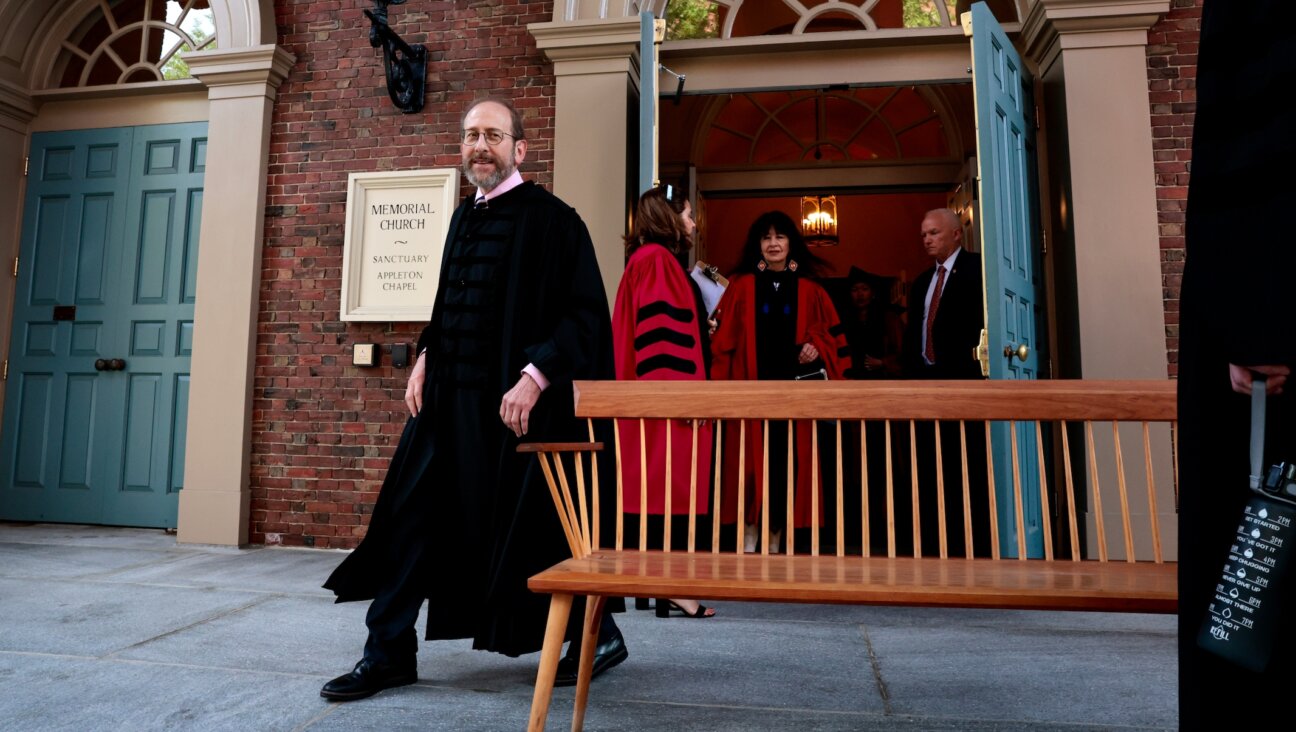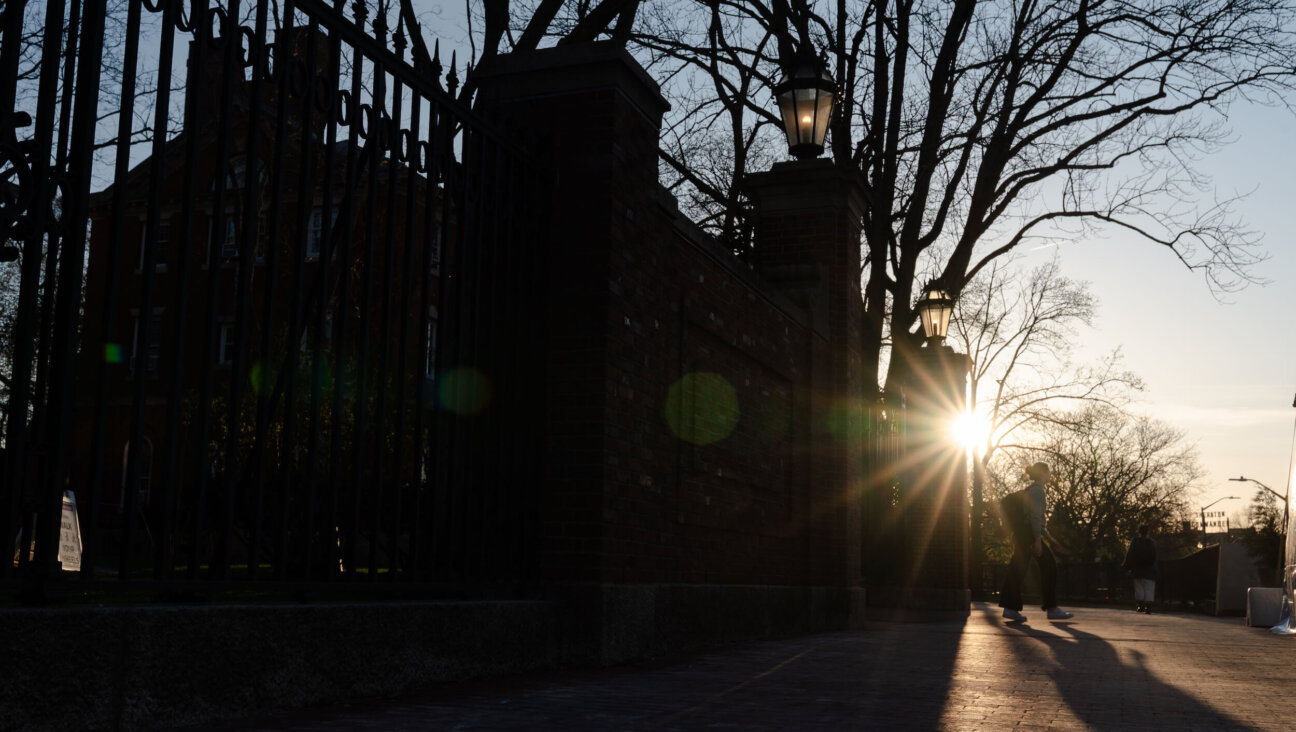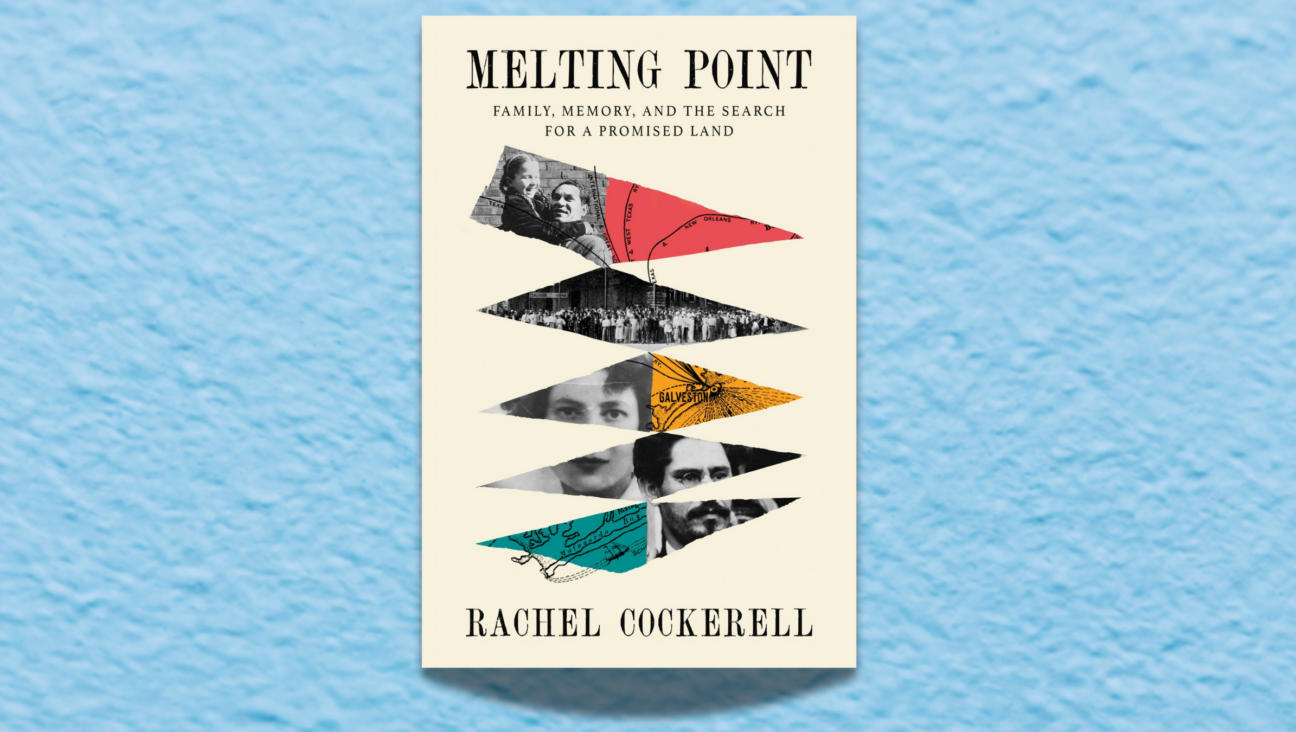How Kraftwerk helped reimagine a post-Holocaust Germany

Kraftwerk Image by Getty Images
The founder of pioneering German electronic group, Kraftwerk, Florian Schneider has died at 73. While there is nothing explicitly Jewish about the legendary band, or its founder, Kraftwerk was open in its attempt to create a new German identity in the wake of, and as a reaction to, Nazism and the Holocaust. Take, for example, their two key albums, “Autobahn” (1974) and “Trans-Europe Express” (1977).
While the Nazis did not invent the Autobahn, they capitalized on it to accelerate their Reichsautobahn project along with Hitler’s “pet project,” the Volkswagen. In the postwar era, increasing mobility and the modernization of the motorways, as celebrated by Kraftwerk in “Autobahn,” was seen as a sign of progress away from the Nazi past and towards a new Germany free of the shackles of history.
Likewise, Kraftwerk’s image of a pan-European railway evoked in “Trans-Europe Express” was an antidote to that of the instrumental role of the Reichsbahn in transporting hundreds of thousands of Jews and others to their deaths. Kraftwerk’s track envisaged a borderless Europe in which anyone and everyone could travel freely.
Kraftwerk and its music recalled the pre-Hitler era of 1930s Weimar Germany, Bauhaus, and German Expressionism, during which there was significant Jewish influence. One of their tracks is named “Metropolis” in homage to the 1927 film by Jewish director Fritz Lang. In that movie, the scientist, Dr. Rotwang, creates a robot or golem whom he calls the “machine-man” or “machine-person.”
Kraftwerk increasingly began to present themselves as the “man-machine” (in German: die mensch-maschine, from which, of course, Yiddish derives the word mensch). As the band began to increasingly liken themselves to, and replace themselves with dummies or robots, they obliquely invoked the legend of the Jewish myth of the golem. Indeed, their growing reliance on computers to generate their sounds echoed that of the modern Kabbalists, that is, creators of golems — computer scientists who used numbers to generate artificial life.
The cover image of the resulting album “The Man-Machine” in 1978 was a deliberate duplication of the work of the Jewish graphic designer, El Lissitzky. On the back cover of the album was an excerpt published by him in a 1922 children’s book entitled Two Squares: A Supremacist Tale of Two Squares in Six Constructions. An accompanying note made this connection explicit: “Artwork Karl Klefisch/Inspired by El Lissitzky.”
Yet, at the same time, on that very album, Kraftwerk deliberately used imagery and a red, white, and black color scheme associated with the Nazis as a means to encourage an unwilling Germany to face its past and to look itself in the mirror.
But, in Kraftwerk’s rejection of their haunted Nazi past, African American rappers in New York found an inspirational beat to influence their music. Rappers such as Africa Kool DJ Herc and Afrika Bambaataa, who hailed from the Bronx, made such iconic hits as “Planet Rock,” leading to the creation of a whole new genre of music. But that is another story.
The Forward is free to read, but it isn’t free to produce

I hope you appreciated this article. Before you go, I’d like to ask you to please support the Forward.
Now more than ever, American Jews need independent news they can trust, with reporting driven by truth, not ideology. We serve you, not any ideological agenda.
At a time when other newsrooms are closing or cutting back, the Forward has removed its paywall and invested additional resources to report on the ground from Israel and around the U.S. on the impact of the war, rising antisemitism and polarized discourse.
This is a great time to support independent Jewish journalism you rely on. Make a Passover gift today!
— Rachel Fishman Feddersen, Publisher and CEO
Most Popular
- 1

News Student protesters being deported are not ‘martyrs and heroes,’ says former antisemitism envoy
- 2

News Who is Alan Garber, the Jewish Harvard president who stood up to Trump over antisemitism?
- 3

Fast Forward Suspected arsonist intended to beat Gov. Josh Shapiro with a sledgehammer, investigators say
- 4

Politics Meet America’s potential first Jewish second family: Josh Shapiro, Lori, and their 4 kids
In Case You Missed It
-

Opinion Why can Harvard stand up to Trump? Because it didn’t give in to pro-Palestinian student protests
-

Culture How an Israeli dance company shaped a Catholic school boy’s life
-

Fast Forward Brooklyn event with Itamar Ben-Gvir cancelled days before Israeli far-right minister’s US trip
-

Culture How Abraham Lincoln in a kippah wound up making a $250,000 deal on ‘Shark Tank’
-
Shop the Forward Store
100% of profits support our journalism
Republish This Story
Please read before republishing
We’re happy to make this story available to republish for free, unless it originated with JTA, Haaretz or another publication (as indicated on the article) and as long as you follow our guidelines.
You must comply with the following:
- Credit the Forward
- Retain our pixel
- Preserve our canonical link in Google search
- Add a noindex tag in Google search
See our full guidelines for more information, and this guide for detail about canonical URLs.
To republish, copy the HTML by clicking on the yellow button to the right; it includes our tracking pixel, all paragraph styles and hyperlinks, the author byline and credit to the Forward. It does not include images; to avoid copyright violations, you must add them manually, following our guidelines. Please email us at [email protected], subject line “republish,” with any questions or to let us know what stories you’re picking up.











